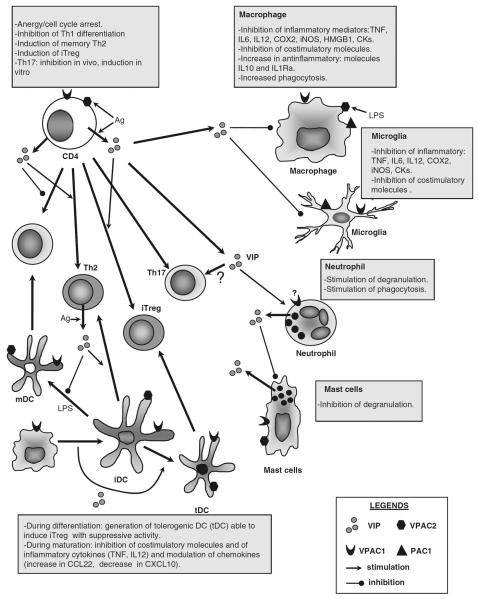Fig. 2.
Effects of VIP on immune cells. VIP is released in the context of an immune response by CD4 and CD8 lymphocytes (especially, Th2 CD4 and Tc2 CD8 cells), and by mast cells and neutrophils. Various immune cells differentially express the three VIP receptors (VPAC1, VPAC2 and PAC1), whose expression is modulated by antigenic and inflammatory stimuli. VIP acts on macrophages and microglia inhibiting the production of inflammatory mediators, such as cytokines, chemokines (CKs), lipids (PGE2 by inhibiting cycloxygenase 2, COX2) and free radicals (nitric oxide by inhibiting the inducible form of NO synthase, iNOS), and by stimulating the production of anti-inflammatory cytokines (IL-10 and IL-1Ra). In addition, VIP reduces costimulatory molecule expression in macrophages and mature dendritic cells (mDCs), limiting the clonal expansion of Th1 cells under inflammatory conditions. VIP modulates the adaptive response in different ways. First, VIP inhibits the differentiation of Th1 cells and favors the expansion of Th2 cells through various non-excluding mechanisms that involve regulation of DC functions, Th1-differentiating factors, chemokines and apoptosis. Second, VIP induces the emergence of Treg cells (iTreg) through direct effects on naïve T cells and indirectly through the generation of tolerogenic DCs (tDCs). The effect on Th17 differentiation is controversial. VIP impairs mast cell degranulation, whereas the antimicrobial functions of neutrophils appear to be stimulated by VIP

